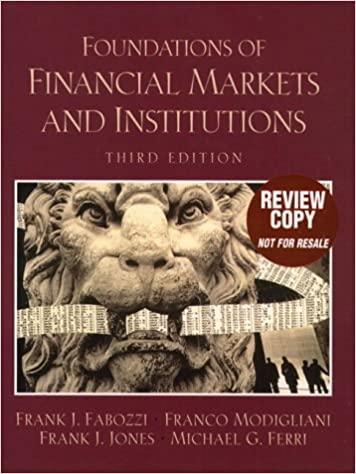Question
1. A stock has a required return of 11%, the risk-free rate is 6%, and the market risk premium is 4%. What is the stock's
1. A stock has a required return of 11%, the risk-free rate is 6%, and the market risk premium is 4%. What is the stock's beta? If the market risk premium increased to 5%, what would happen to the stock's required rate of return? Assume that the risk-free rate and the beta remain unchanged.
2. Stock R has a beta of 1.6, Stock S has a beta of 0.65, the expected rate of return on an average stock is 13%, and the risk-free rate of return is 7%. By how much does the required return on the riskier stock exceed the required return on the less risky stock?
3. Calculate the required rate of return for Manning Enterprises assuming that investors expect a 3% rate of inflation in the future. The real risk-free rate is 2.5%, and the market risk premium is 6.5%. Manning has a beta of 1.6, and its realized rate of return has averaged 13.5% over the past 5 years.
Step by Step Solution
There are 3 Steps involved in it
Step: 1

Get Instant Access to Expert-Tailored Solutions
See step-by-step solutions with expert insights and AI powered tools for academic success
Step: 2

Step: 3

Ace Your Homework with AI
Get the answers you need in no time with our AI-driven, step-by-step assistance
Get Started


